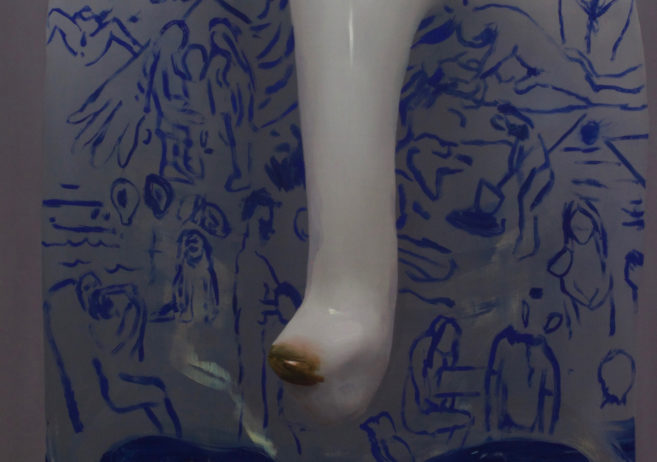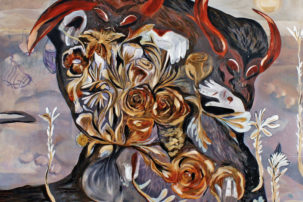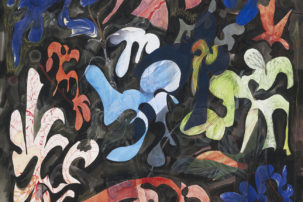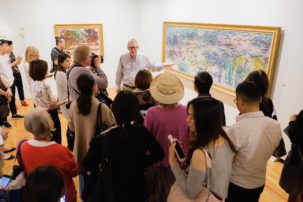Dreamy, utopian landscapes. Hybrid anatomies of vibrant forms and lines. Projections upon projections upon projections. These are just some of the motifs used by finalists in this year’s RBC Canadian Painting Competition.
This morning, RBC, in collaboration with the Canadian Art Foundation, announced the 15 finalists in this year’s competition. The winner of the 2017 RBC Canadian Painting Competition, to be announced on October 17 at the National Gallery of Canada in Ottawa, will receive a cash prize of $25,000. Two honourable mentions each receive $15,000, and the remaining 12 finalists receive $2,500 each.
The top three paintings will also be acquired by RBC’s corporate art collection, and the finalists will all receive informal mentorship opportunities with jury members. Here, in alphabetical order, are the finalists in this year’s RBC Canadian Painting Competition:
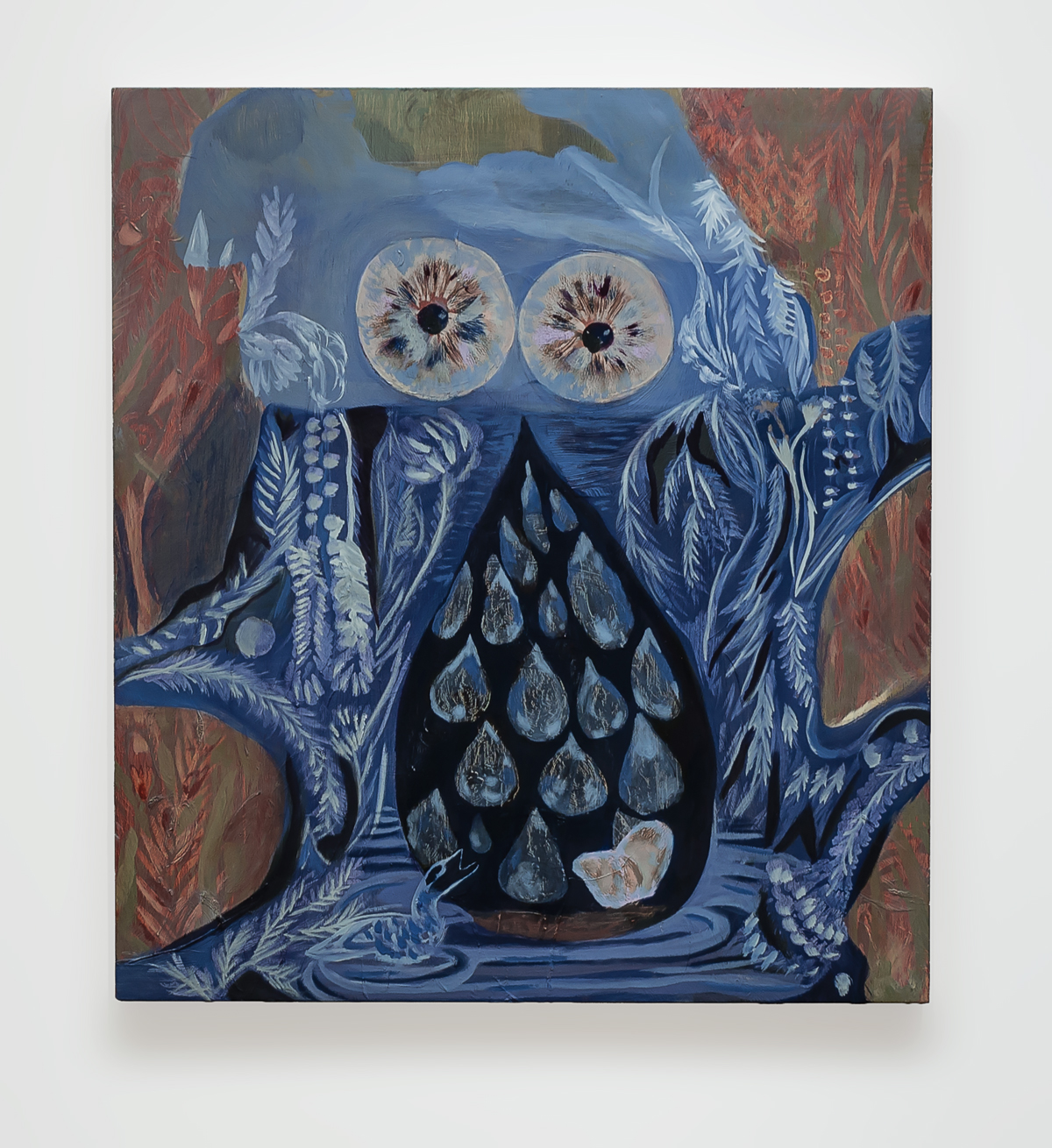 Amanda Boulos, Duckie Wants Water, 2017. Oil on panel, 28 inches by 25 inches.
Amanda Boulos, Duckie Wants Water, 2017. Oil on panel, 28 inches by 25 inches.
Amanda Boulos
The sense of fragmentation, surrealism and instability in the paintings of Ontario-based artist Amanda Boulos has a very real and concrete source—namely, as Boulos puts it, “the complicated, diverse and ever-changing nature of Palestinian history and identity.” Boulos recently graduated from the MFA program at the University of Guelph and received her BFA from York University in 2013. During her studies, she developed confidence in the ability of art to speak to worlds beyond the white cube. “I believe that painting provides a plural space with the flexibility to intervene in conversations about Middle Eastern politics, Palestinian identities and the diaspora,” Boulos states. Her imagery, which draws on both historic and contemporary Palestinian art and symbology, aims to craft “new narratives, interrupting the oppressive identity formations that continue to haunt Palestinians today.”
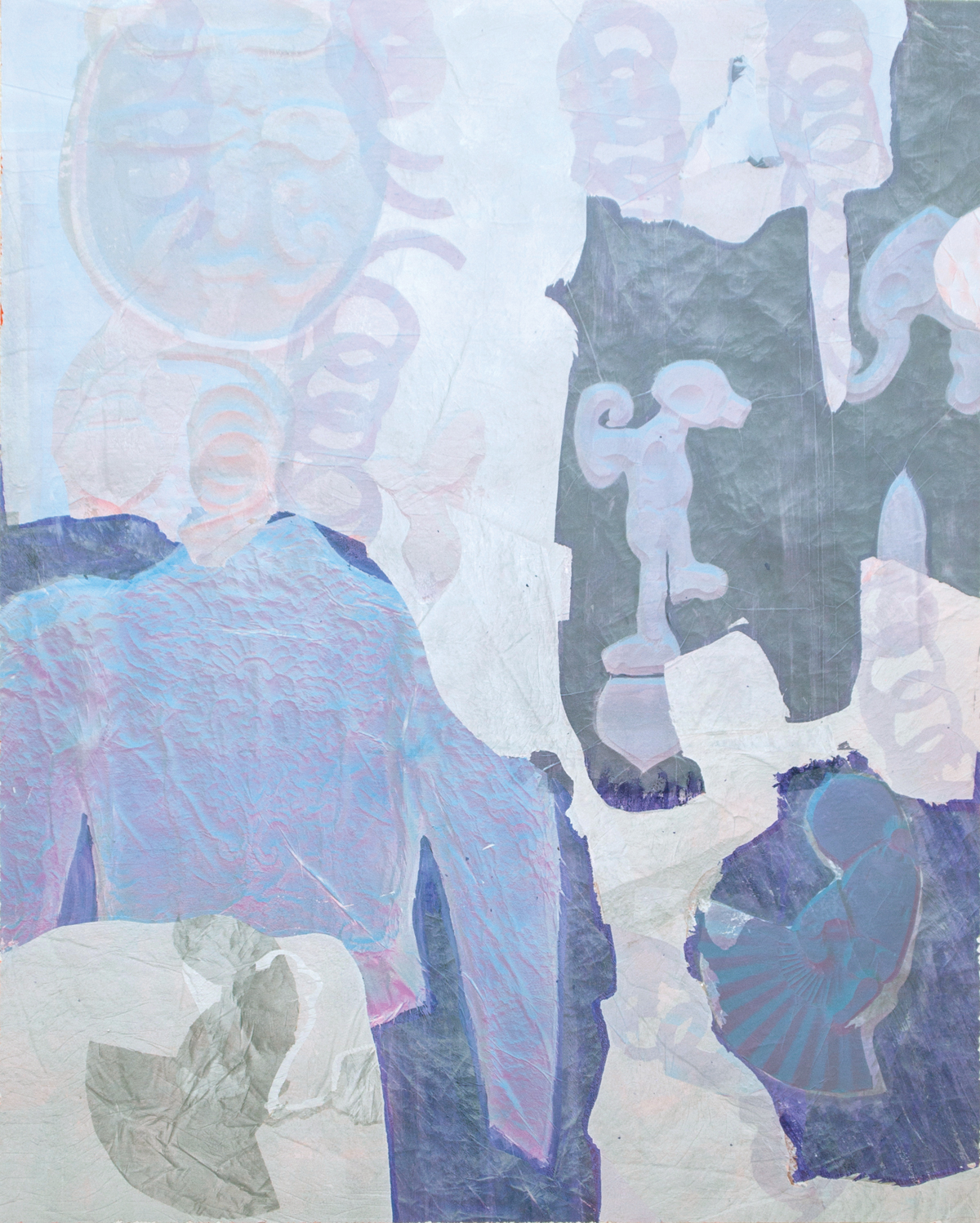 Teto Elsiddique, neckrings, a breezy thing, 2017. Acrylic on canvas, 60 inches by 48 inches.
Teto Elsiddique, neckrings, a breezy thing, 2017. Acrylic on canvas, 60 inches by 48 inches.
Teto Elsiddique
Born in England, raised in Sudan and Canada, and working in the United States, Teto Elsiddique, in his own words, “wrestles with the index of past cultural identifiers that have transgressed borders, leaving echoes in our everyday language, gestures and material existence.” His recent acrylic works in washes of blue hues reflect this sense of echo, memory and trace, faintly suggesting objects that include “children’s learning toys, model train tracks, a wedding dress and various heirlooms” melded into a framework of “abstract bodies, scenes or narratives that collapse timelines.” Elsiddique is a 2016 graduate of the MFA program at Yale University and received a BFA from NSCAD University in 2013. He was also a finalist in the 2014 RBC Canadian Painting Competition.
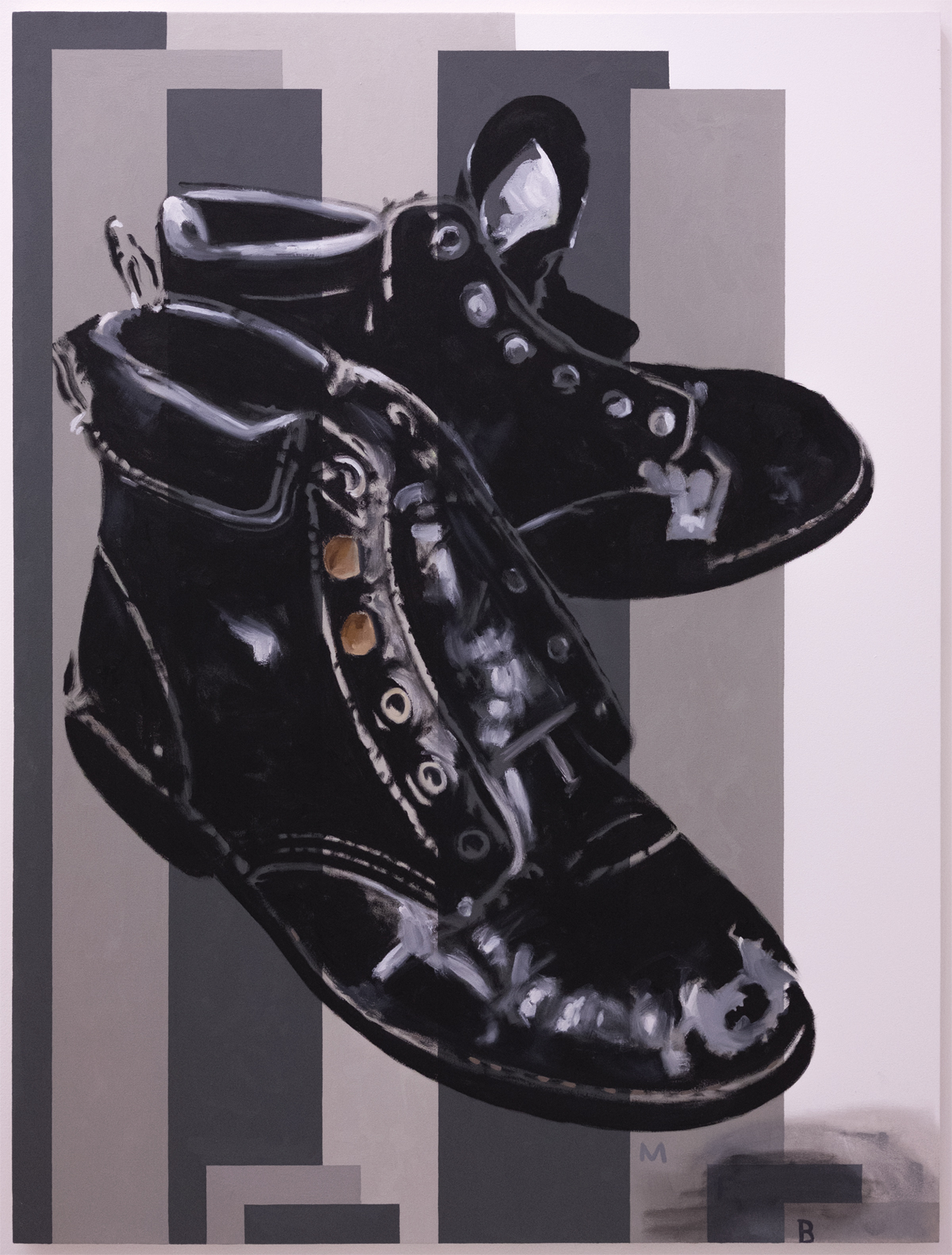 Michael Freeman Badour, Patrick’s Boots, 2017. Oil on muslin, 48 inches by 36 inches.
Michael Freeman Badour, Patrick’s Boots, 2017. Oil on muslin, 48 inches by 36 inches.
Michael Freeman Badour
The powers and pitfalls of language in its various forms—whether visual, textual or sensory—are cannily juxtaposed in the works of Michael Freeman Badour. Whether painting the outline of an object alongside the words that describe it, or suggesting how an image stencilled in paper changes with intensity of light shining behind it, Badour prompts a viewer’s awareness about what he calls “the limits of communicative language and the ways representation functions as a tool for understanding.” Badour graduated from OCAD University in 2014 with a BFA in painting and a minor in digital media, and his work (as in Patrick’s Boots, above) also bridges times and technologies, greyscales and golden years: Patrick’s Boots is inspired by a photograph of his brother’s childhood boots, as well as by Van Gogh’s paintings of his own boots. The result is “a symbol for how the world and its objects come into one’s existence.”
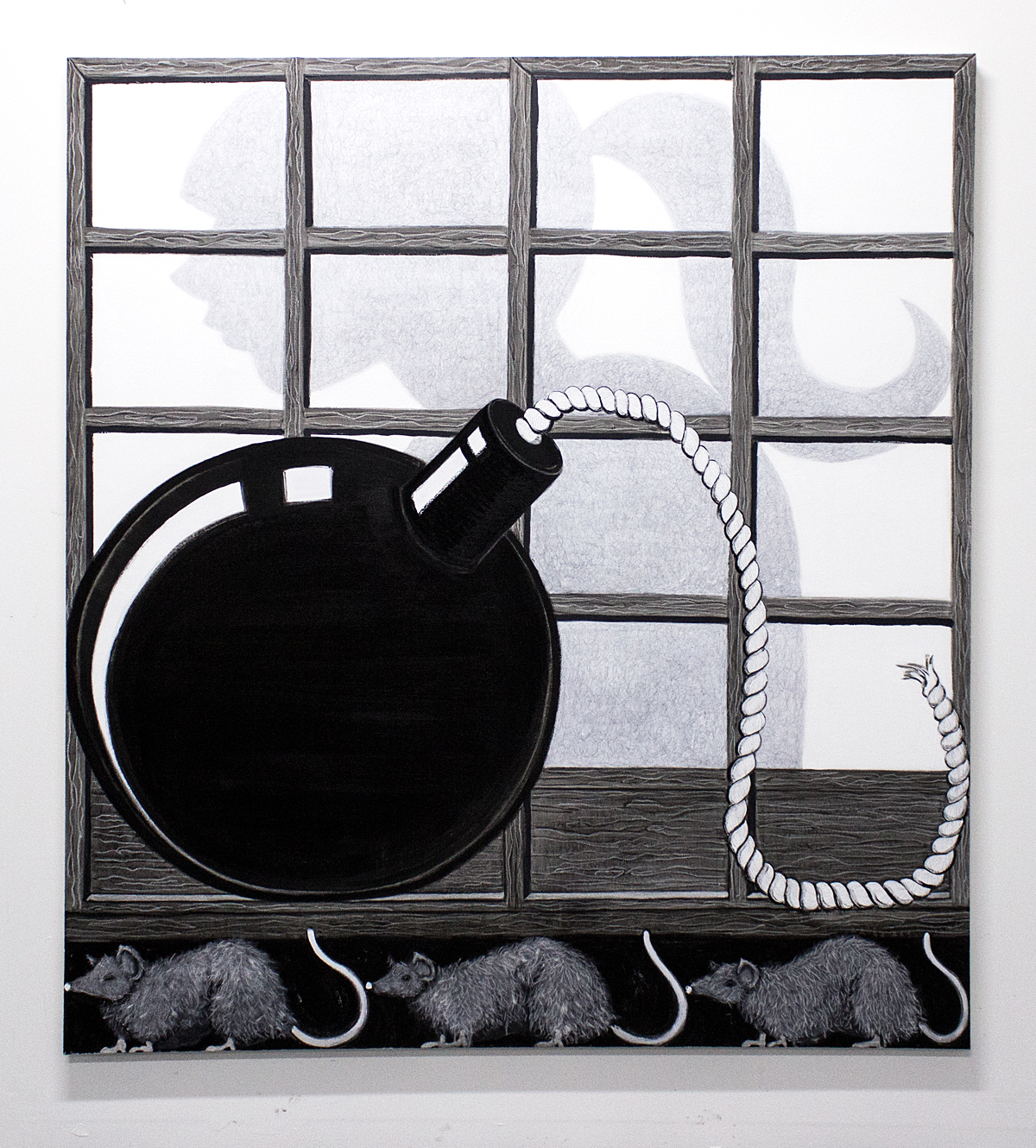 Cindy Ji Hye Kim, Conspiracy Theory, 2017. Oil, acrylic, oil pastel on canvas, 68 inches by 62 inches.
Cindy Ji Hye Kim, Conspiracy Theory, 2017. Oil, acrylic, oil pastel on canvas, 68 inches by 62 inches.
Cindy Ji Hye Kim
Limiting herself to shades of black, white and grey in her recent bodies of work, and influenced by her history as an illustrator and animator, Cindy Ji Hye Kim creates paintings that seem at once cartoonish and uncanny. In 2016, Kim received her MFA from Yale University, and in 2013, she earned her BFA from the Rhode Island School of Design. She is currently based in New York, where she uses portions of her studio time considering cinematic and folk-art traditions of Korea, where she was born, as well as surrounding regions. “Playing with pictorial depth and visual symbols,” she writes, “I’m interested in stepping in and out of the picture as an observer, a voyeur and a witness.” Her painting Conspiracy Theory is from a series entitled Foot Steps, based on a series of smaller graphite and ink drawings that explore the psychological space of perception and memory. “I see my practice as participating in contemporary dialogue of painting,” she writes, “by redefining the medium as a set of relations that brings together multiple histories of visual art traditions.”
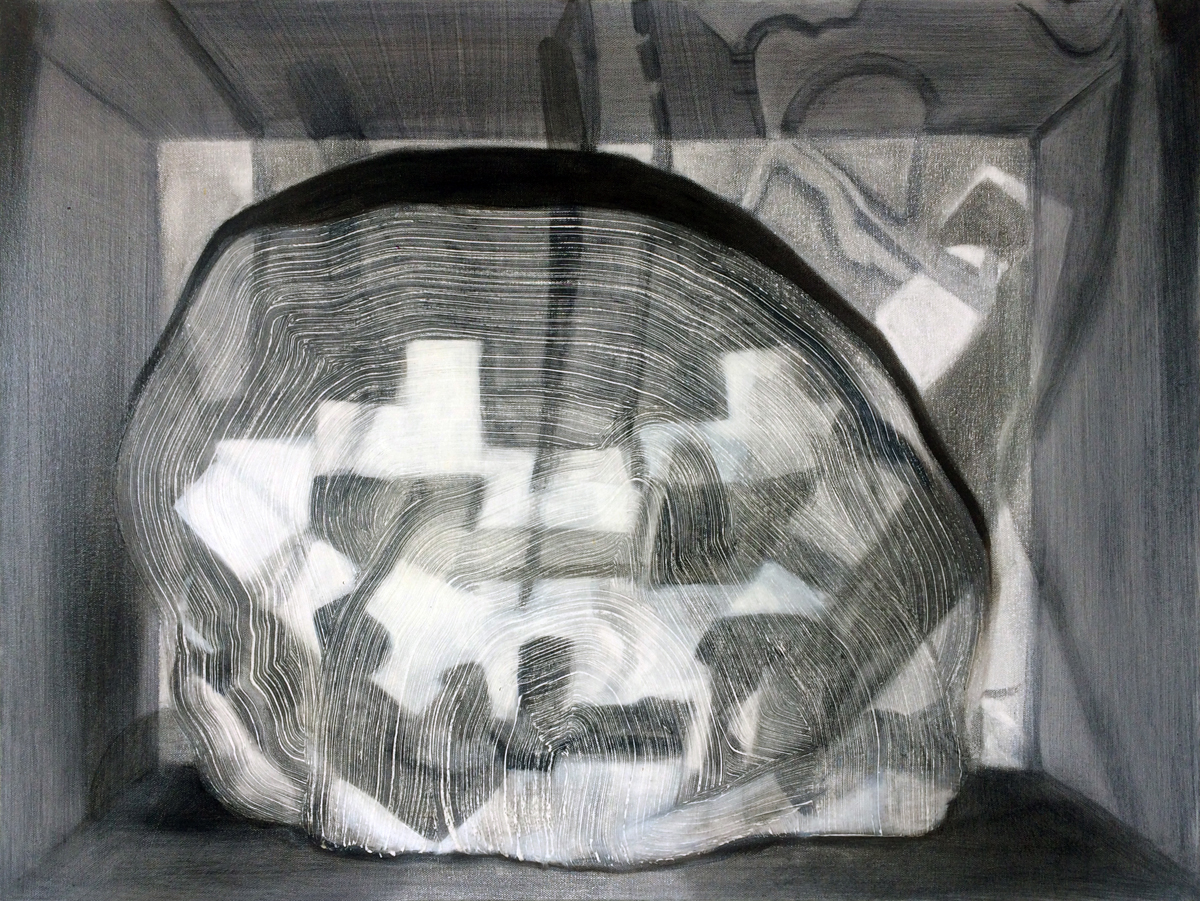 David Kaarsemaker, Portage 1, 2017. Oil and acrylic on canvas, 24 inches by 32 inches.
David Kaarsemaker, Portage 1, 2017. Oil and acrylic on canvas, 24 inches by 32 inches.
David Kaarsemaker
Projections of form upon form and image upon image lead to both complication and captivation in the paintings of David Kaarsemaker. In 2014, Kaarsemaker earned an MFA from the University of Ottawa, while in 2004, he received a BFA from Concordia University. His lengthy process of projecting and re-projecting images onto cardboard models, as well as underpainting and sanding down brushwork, calls to mind abstraction and architecture, geographic maps and geological strata. There is also a biographical influence: “I have moved around a lot throughout my life, living in various parts of North America, Asia, Europe and West Africa,” Kaarsmaker states. “This peripatetic life has allowed me to be a part of many places, but from a removed perspective and this paradox of distance and proximity is something that I look to convey in my paintings.”
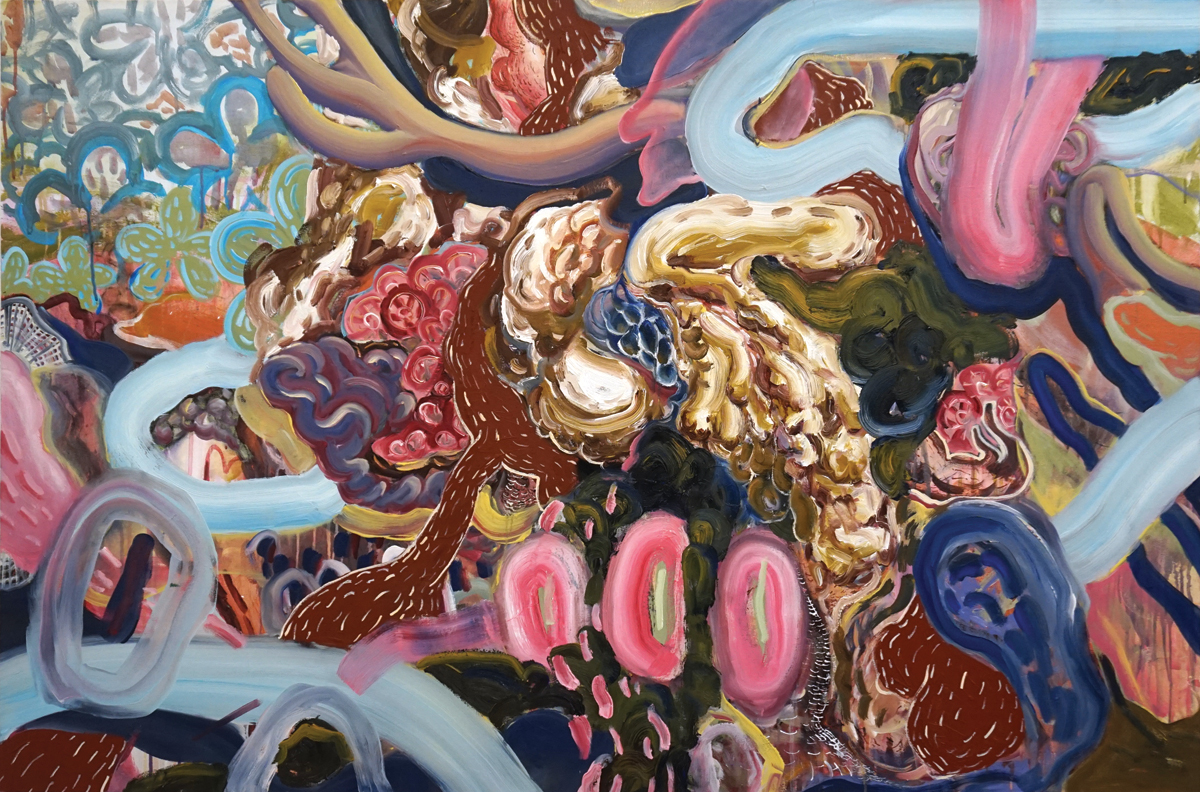 Wei Li, Obsessiveness and excitement, never growing out of them, 2017. Oil and acrylic on canvas, 40 inches by 60 inches.
Wei Li, Obsessiveness and excitement, never growing out of them, 2017. Oil and acrylic on canvas, 40 inches by 60 inches.
Wei Li
A riot of different colours, lines, forms and brushstrokes intertwine in the canvases of Edmonton-based artist Wei Li. “As an immigrant as well as an artist,” the China-raised Li writes, “I believe it is important to visually address the experience of living in this hybrid and dynamic society. The canvas itself functions as a vehicle to carry the painter’s moment of emotion, memory and energy, and the end result is often visually complex.” Organic patterns, symbols and gestures emerge from her experiences, her subconscious and her imagination; then, her paintings are then created layer by layer, with structures, rhythms and energies slowly combining to construct an intricate whole. This year, Li graduated with a BFA from the University of Alberta.
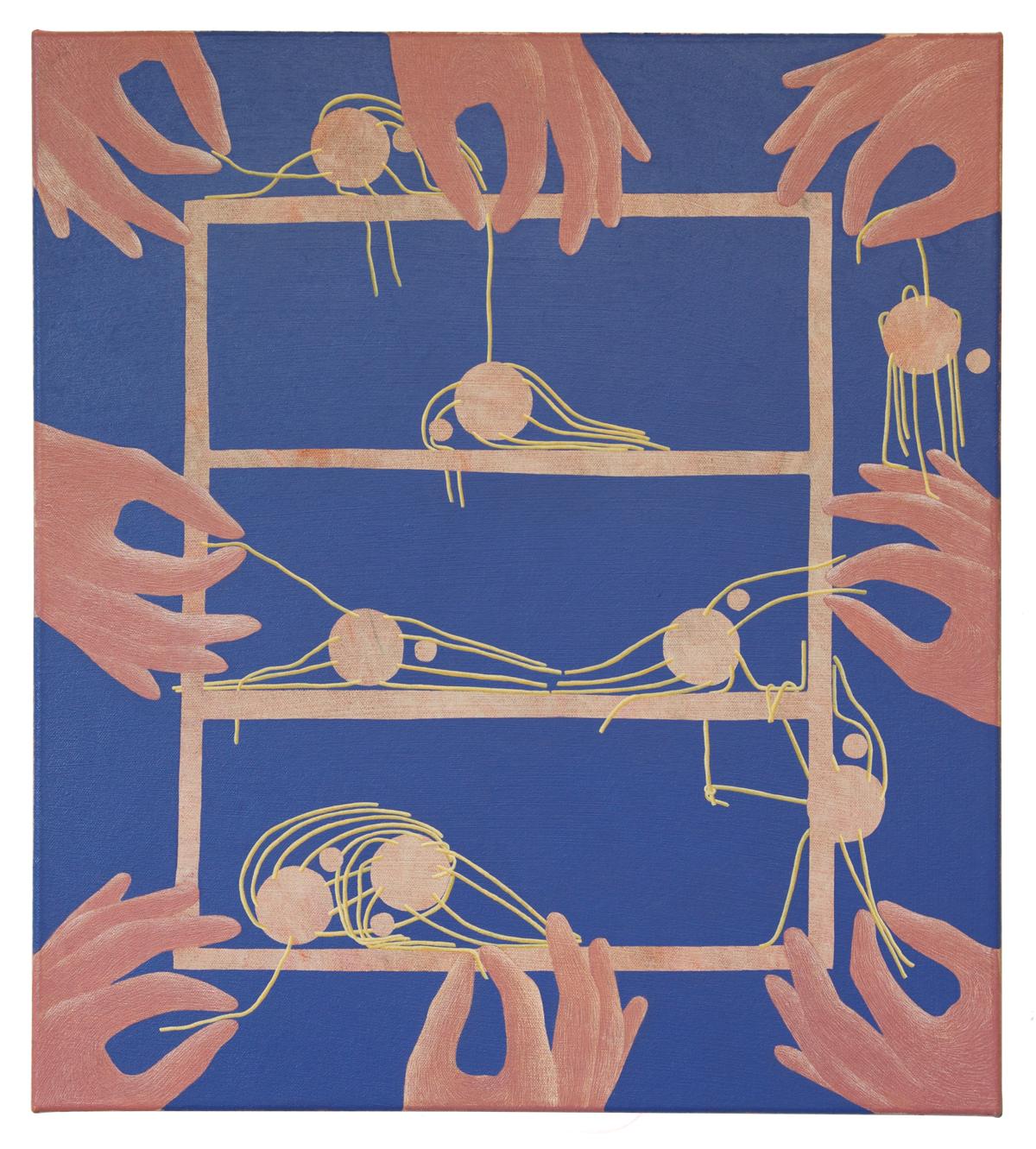 Veronika Pausova, Typography, 2017. Oil on canvas, 20 inches by 18 inches.
Veronika Pausova, Typography, 2017. Oil on canvas, 20 inches by 18 inches.
Veronika Pausova
A sense of wit and play pervades the art of Veronika Pausova, who was born in Prague and now lives and works in Toronto. Pausova received her BFA from the Glasgow School of Art in 2009 and her MFA from Virginia Commonwealth University in 2013. “I like to use a kind of mathematical surrealism, with some personal logic, when I make my paintings,” she writes of her work. “I’m interested in the materiality of paint and how colour, texture and pattern can be conceptual.” Recycling and reworking is also crucial to her process: “I don’t plan my paintings with drawings, but make many paintings and keep re-making them until the right elements come together from the various ‘thrown away’ paintings that I have made. This takes more time, but also helps me find new ways of using paint (scratching, sanding, layering of mediums) in the process.”
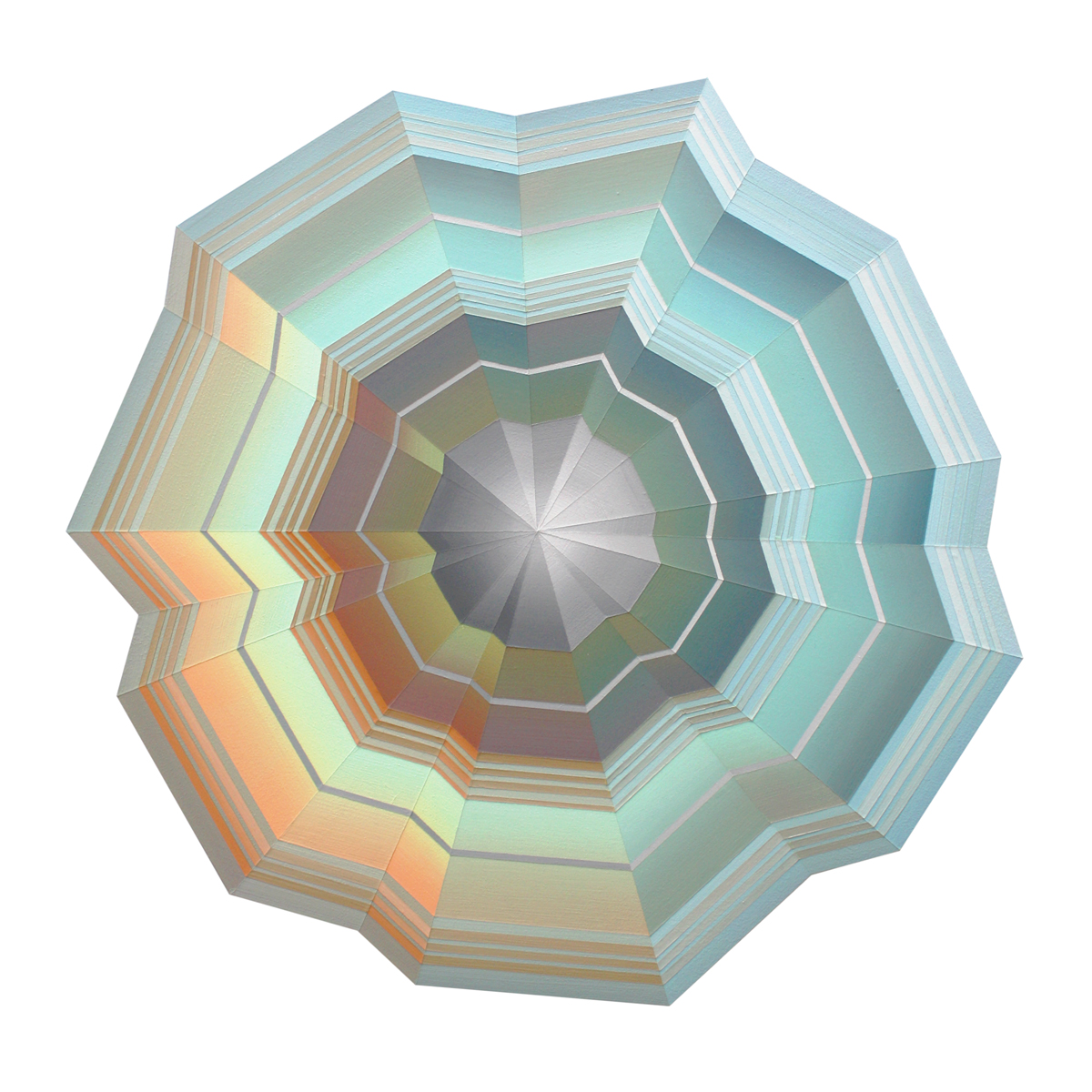 Laura Payne, Enneadec II, 2017. Acrylic on panel, 18 inches by 18 inches.
Laura Payne, Enneadec II, 2017. Acrylic on panel, 18 inches by 18 inches.
Laura Payne
Connections between electronic media and analog painting emerge in unexpected ways in the work of Saskatoon artist Laura Payne. Using specially shaped surfaces and graph-like imagery, Payne’s paintings hearken to the screen, the gradient, the GIF. “Though my art practice is primarily painting-driven, the ideas stem from notions of simulated light and the role electronic media plays in contemporary painting (light, documentation, dissemination),” Payne writes. “I’m interested in how evolving forms of media, outside the tradition and practice of painting, continually inform the trajectory of contemporary painting.” Payne received her BFA in 2010 from Western University and her MFA in 2013 from the Maryland Institute College of Art, where she specialized in painting, video, animation and installation.
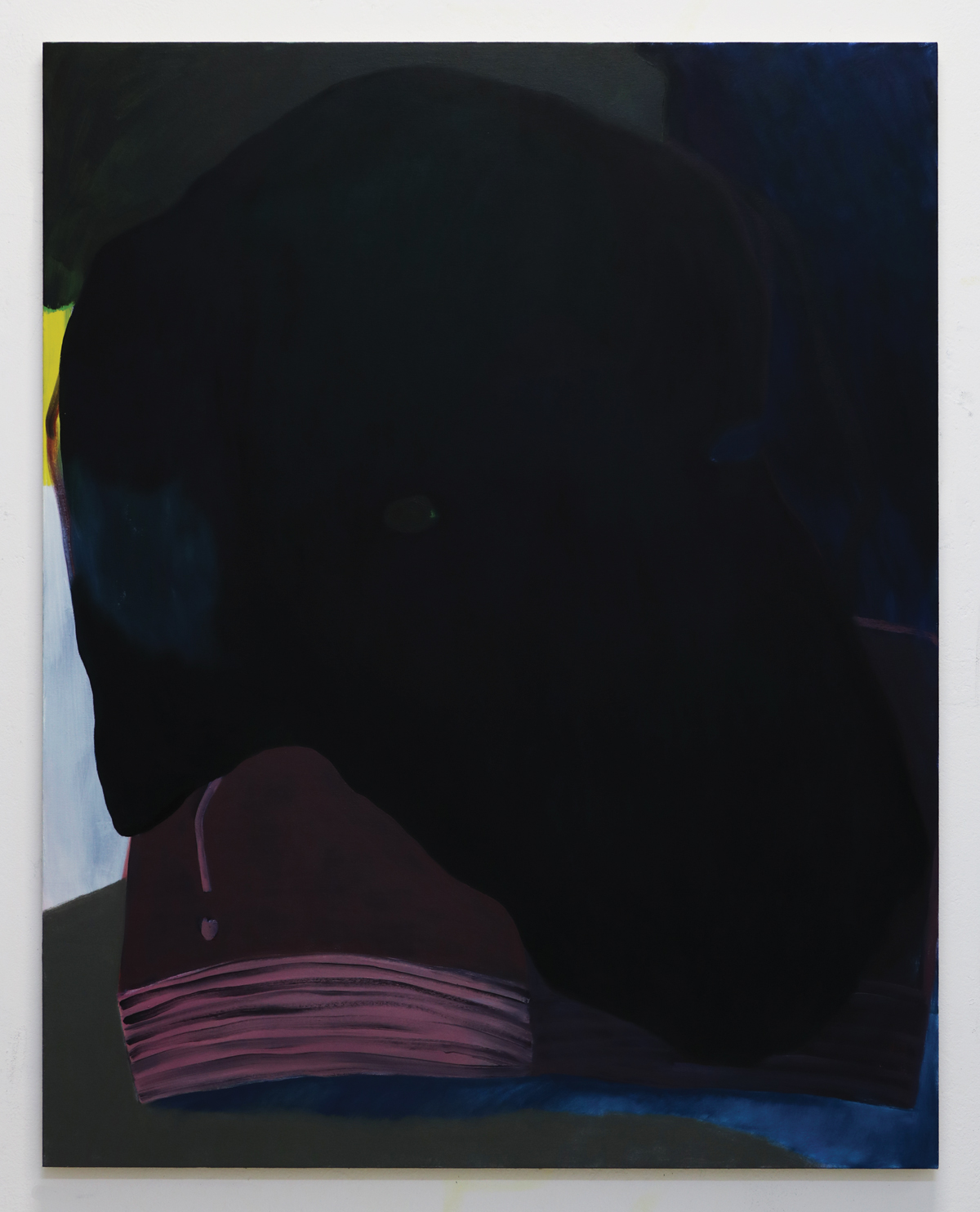 M.E. Sparks, Hollow Dog, 2017. Oil on canvas, 59 inches by 47 inches.
M.E. Sparks, Hollow Dog, 2017. Oil on canvas, 59 inches by 47 inches.
M.E. Sparks
Strategies of masking, blocking and obstructing come to the fore in the paintings of Vancouver-based artist M.E. Sparks—and in this way, her canvases call attention to longstanding power dynamics around looking and seeing. Sparks, who was also a finalist in the 2016 RBC Canadian Painting Competition, has stated that in her approach to art she “look[s] for ways to subvert representational modes of painting to both reveal and call in to question our desire to name what we see,” noting that a desire to see and to name can be linked, ultimately, to a desire to possess. Sparks graduated with an MAA from Emily Carr University in 2016 and completed her BFA at NSCAD University in 2013. Recently, she was also a recipient of the Nancy Petry Award and was selected for residencies in Berlin and Hämeenkyrö.
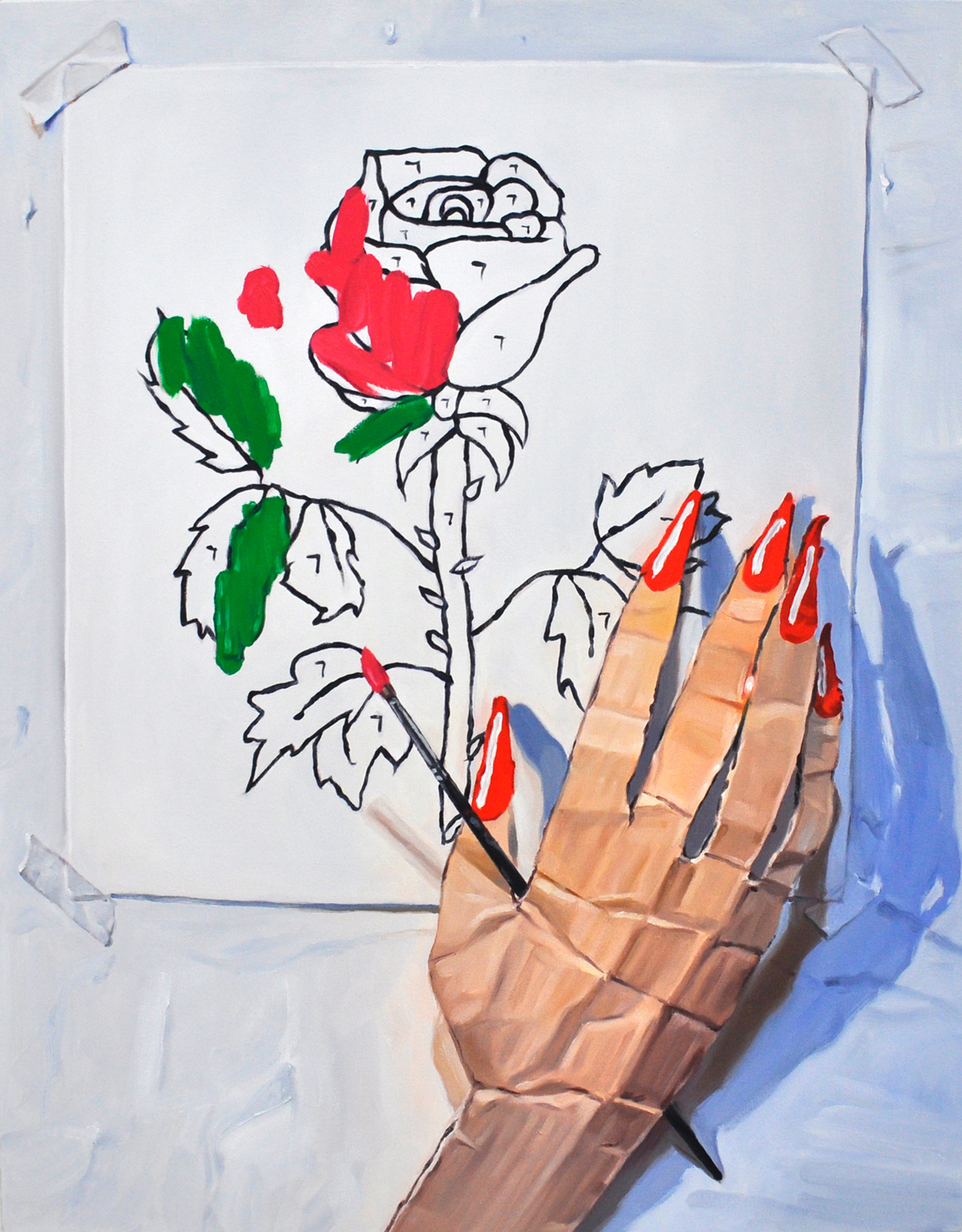 Laura Rokas-Bérubé, Paint by Number 7, 2016. Oil on canvas, 36 inches by 28 inches.
Laura Rokas-Bérubé, Paint by Number 7, 2016. Oil on canvas, 36 inches by 28 inches.
Laura Rokas-Bérubé
Optical illusion, collage, comics and pop iconography are all motifs that viewers may detect in the work of Laura Rokas-Bérubé. Rokas-Bérubé graduated in 2016 from the MFA program at the San Francisco Art Institute and in 2013 received a BFA from Concordia University. The image of the artist in wider culture is one of her interests. “My work acknowledges the current superficial way in which artists use social media as a means to create a persona for their audience,” Rokas-Bérubé writes. “Painters must keep up with their ever-changing role by navigating social constructs while remaining faithful to their practice. Although an unabashedly representational painter, I am continually inspired by several different media, allowing them to change my perception of what painting means to me and to contemporary painting as a whole.”
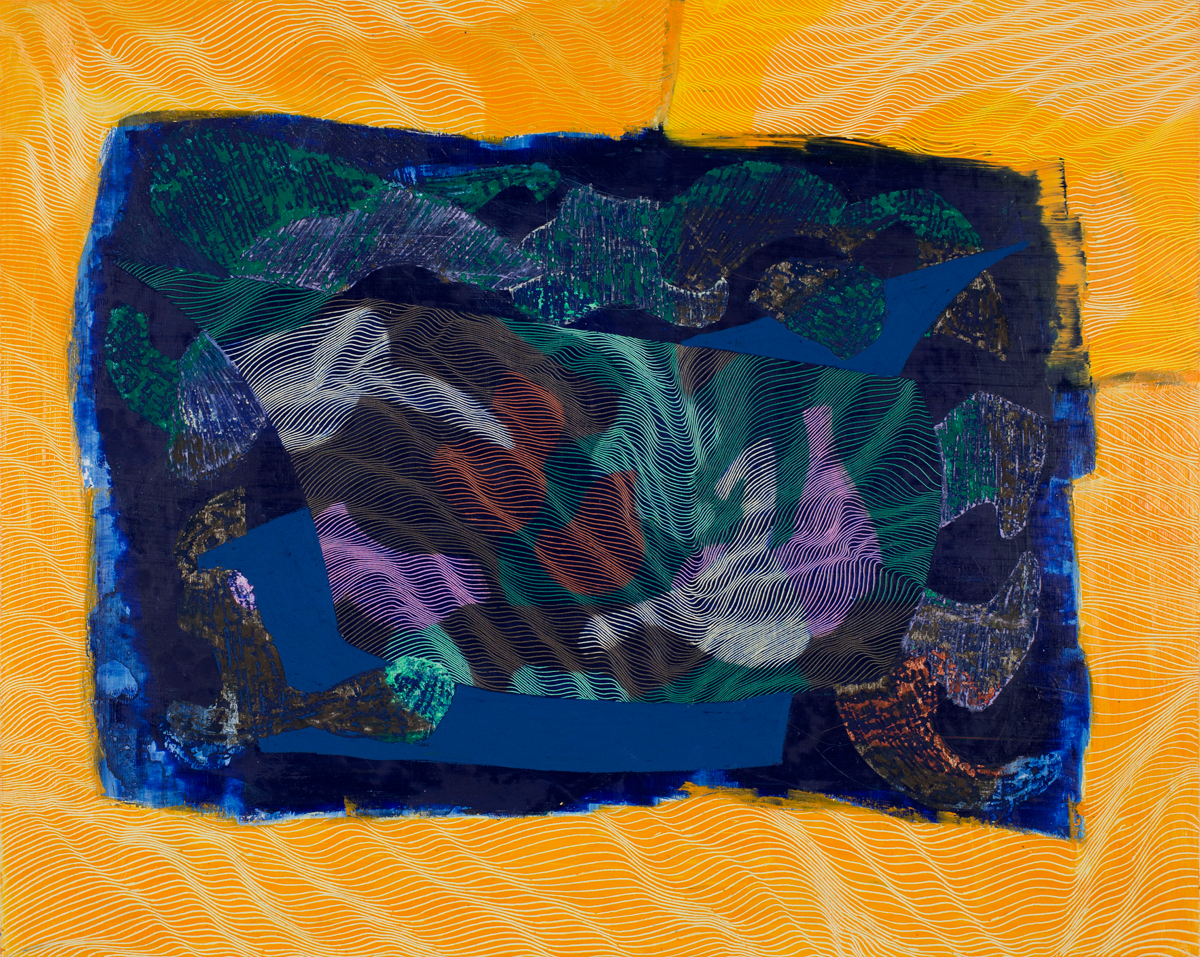 Kizi Spielmann Rose, Sun and a Tide Pool, 2017. Acrylic, oil pastel, and oil stick on panel, 24 inches by 30 inches.
Kizi Spielmann Rose, Sun and a Tide Pool, 2017. Acrylic, oil pastel, and oil stick on panel, 24 inches by 30 inches.
Kizi Spielmann Rose
Leveraging an unusual combination of media—including oil pastel, acrylic paint and Flashe on panel and other supports—Kizi Spielmann Rose creates dazzling, dramatically etched paintings that speak to both childhood play and contemporary art history. “The predominant method in my current work draws directly from a childhood art activity, which I rediscovered while working at a summer camp,” Spielmann Rose explains, “wherein a black layer of oil pastel is applied to a multicoloured base-layer of wax crayon; when the black oil pastel is drawn into, the coloured lines appear in dramatic contrast.” Spielmann Rose’s experiences working with young adults who have Down syndrome and autism—with attention to creative impulse and responsiveness—has also influenced this artist’s process. At the same time, legacies of abstract formalism and op art are also present in his compositions. Spielmann Rose is a 2017 graduate of the MFA program at the University of Ottawa and also received a BFA at NSCAD University in 2014.
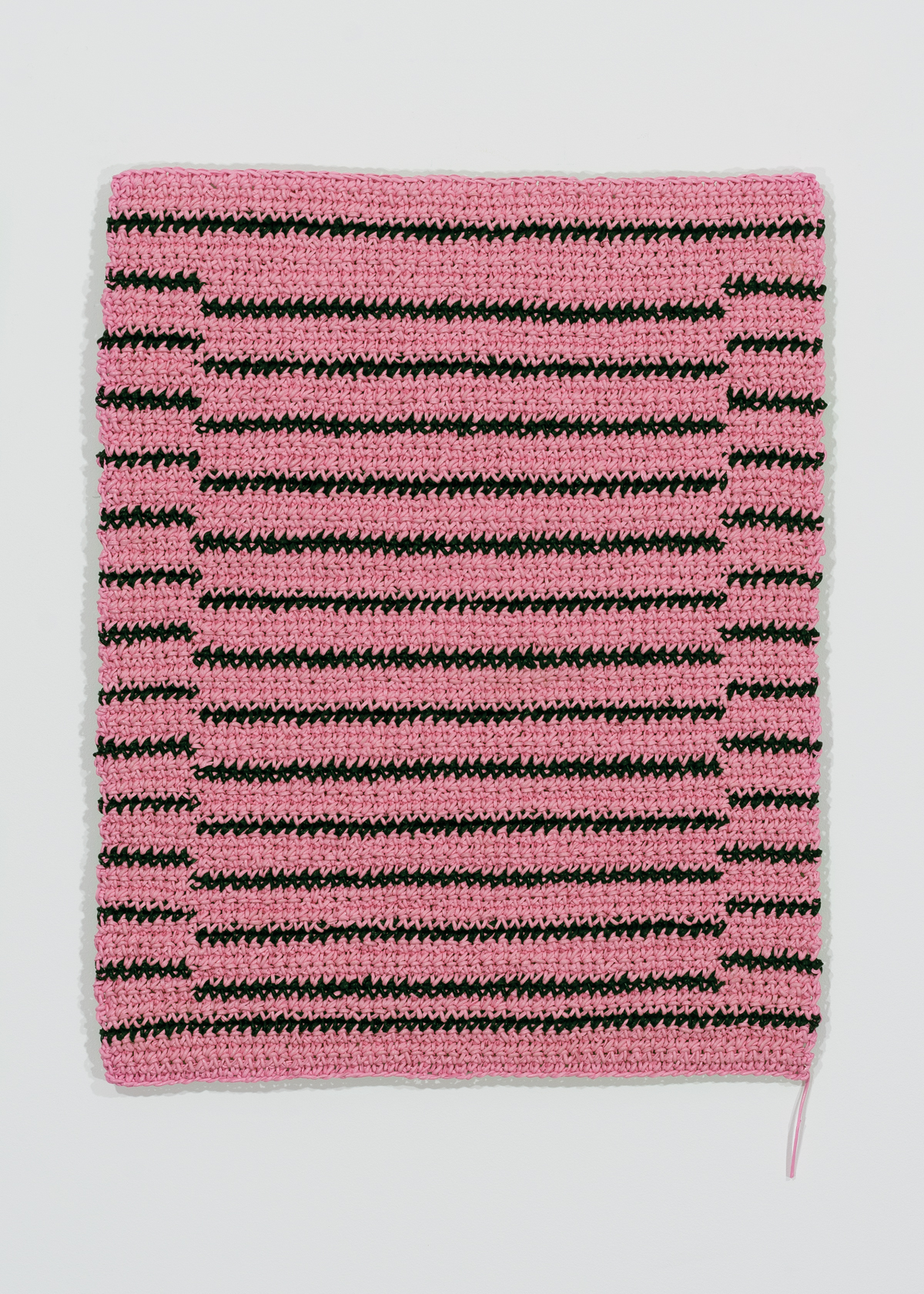 Angela Teng, Line Dance Pink and Black for Mary Heilmann, 2016. Crocheted acrylic paint on aluminum panel, 21 inches by 17 inches.
Angela Teng, Line Dance Pink and Black for Mary Heilmann, 2016. Crocheted acrylic paint on aluminum panel, 21 inches by 17 inches.
Angela Teng
In her intensive and innovative studio process, Vancouver artist Angela Teng engages in the project of, as she puts it, “renegotiating how a picture can be made.” Of late, for Teng, this has included several techniques: drying acrylic paint into long strips, which are then crocheted into wall works; coating parts of painted canvases with vibrant flocking material; extruding paint through canvases of crocheted string; and removing acrylic from thickly painted canvases to reveal soft layers beneath. Teng, who was also a finalist in the 2016 RBC Canadian Painting Competition, received her BFA from Emily Carr University in 2011. And her work, while speaking strongly to materials, also touches upon questions of painting and craft, gender and power. From hard-edge abstraction, minimalism and colour-field painting to feminist performance, quilting patterns and folk sculpture, Teng’s paintings incorporate many different movements into memorable, palpably assertive objects.
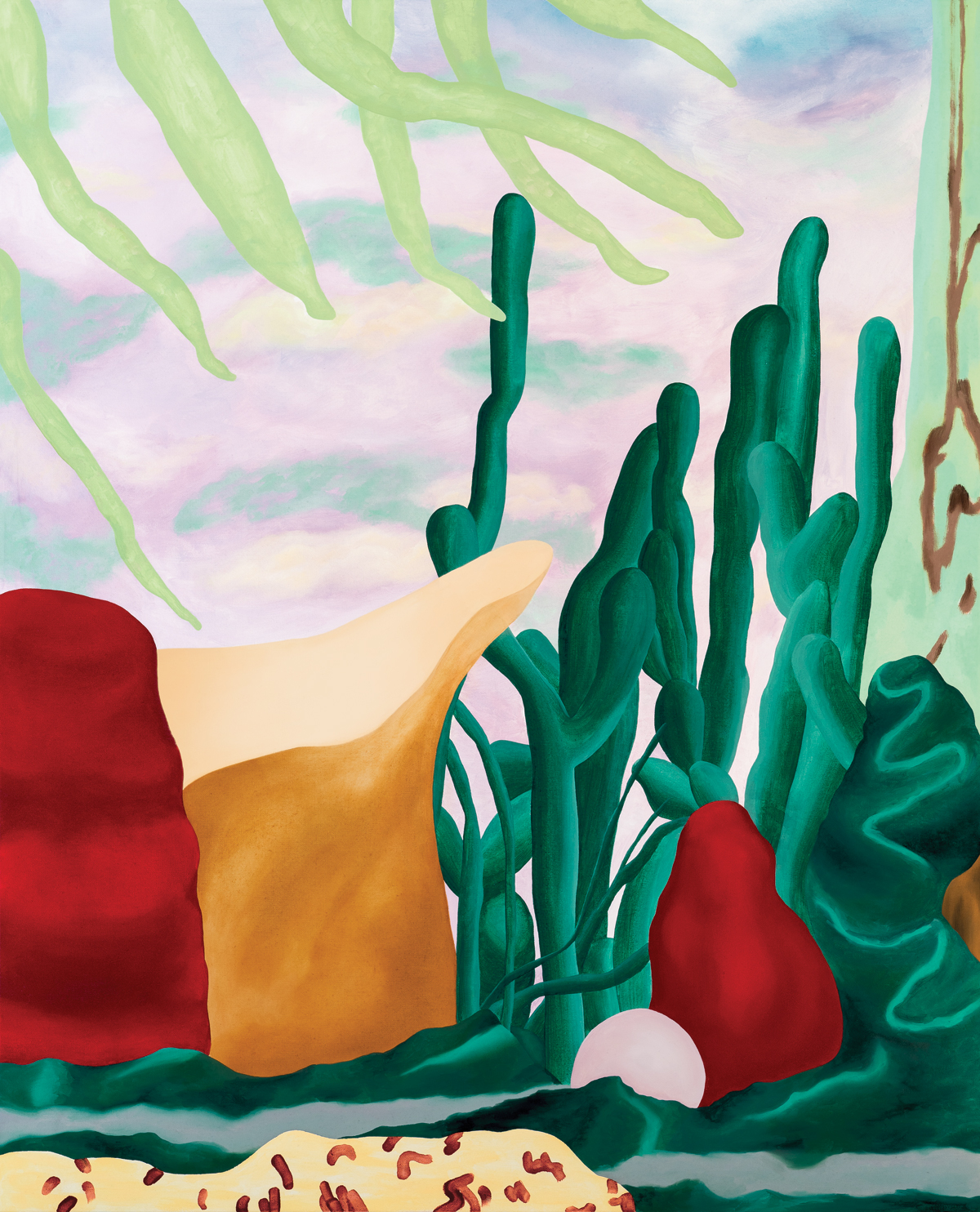 Joani Tremblay, The Lure of the Local Senses of Place in a Multicentered Society, 2017. Oil on canvas, 44 inches by 36 inches.
Joani Tremblay, The Lure of the Local Senses of Place in a Multicentered Society, 2017. Oil on canvas, 44 inches by 36 inches.
Joani Tremblay
Vibrant colour, classic forms and dreamy landscapes are often reworked by artist Joani Tremblay to urgent—and not just representational—ends. “In a time of fear, hate and populism, pleasure and beauty become a form of resistance,” the Montreal-based Tremblay writes, and her work pursues this type of politic with notable power. In 2016, Tremblay graduated from the MFA program at Concordia University, and in 2012 she received her BVA from UQAM. She has participated in residencies in Berlin and Tokyo, and has upcoming solo exhibitions in Los Angeles and Stockholm. “I paint utopias, illusory places imagined as pleasure states, or a feeling of a place, tangling between abstraction and representation,” she asserts. “Landscapes and their utopias are invariably correlated to the question of culture.”
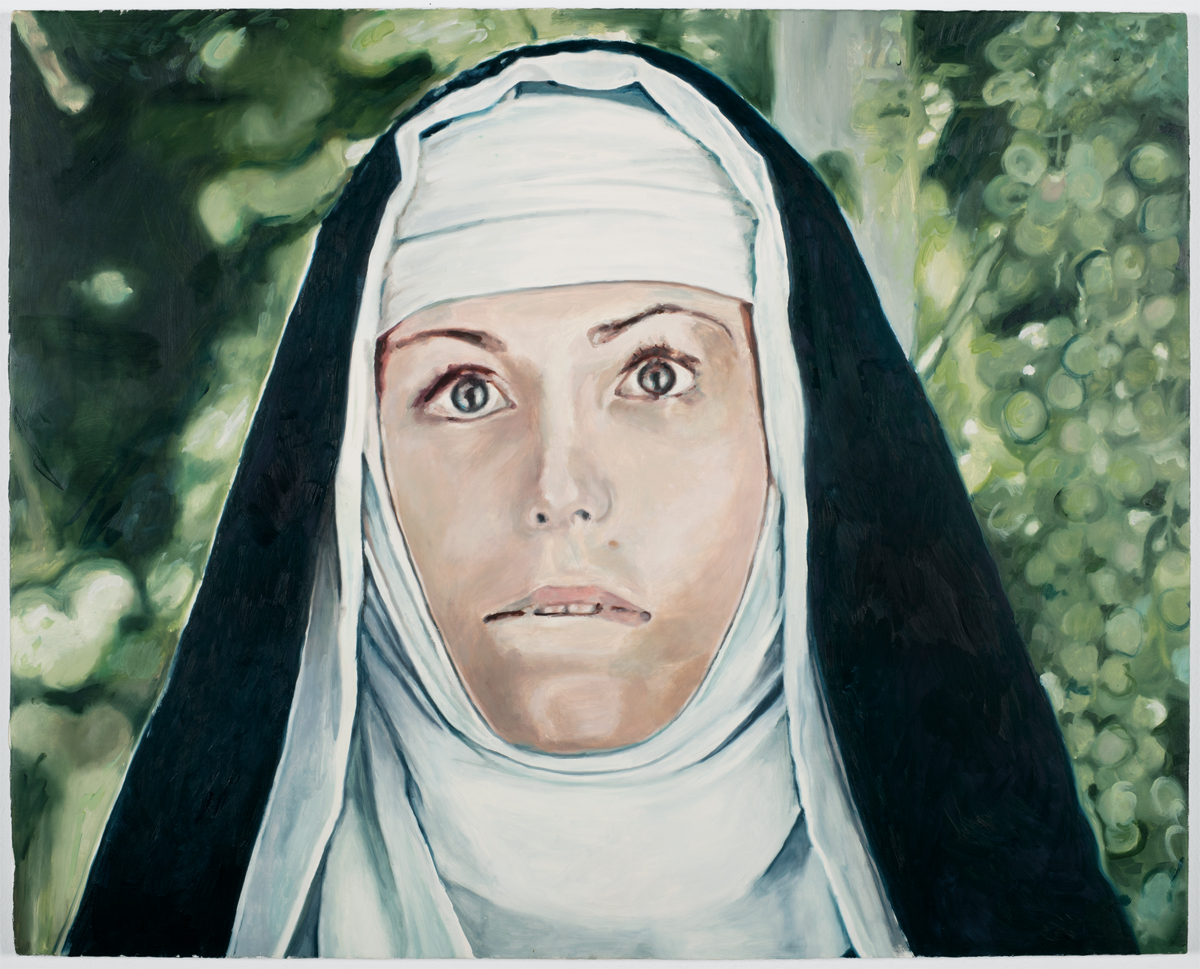 Tristan Unrau, Nun, After Pasolini, 2017. Oil on canvas, 29 inches by 36 inches.
Tristan Unrau, Nun, After Pasolini, 2017. Oil on canvas, 29 inches by 36 inches.
Tristan Unrau
“In many ways I paint in opposition to the idea that the artist must contain a specific voice. A painting contains its own style, but why should the painter?” So states Los Angeles–based Canadian artist Tristan Unrau, whose subject matter ranges from filmic nuns (as in Nun, After Pasolini, above) to Amsterdam office buildings to a crocodile crying salty tears—and whose approach could be read, across different canvases, as varying from photorealistic to fauvist to abstract. Unrau, who was also a finalist in the 2015 RBC Canadian Painting Competition, recently graduated from the MFA program at UCLA and received his BFA from Emily Carr University in 2012. Even in this day and age, the many possibilities in painting still appeal to this artist. “Painting can be a way of thinking,” he states. “To paint is a kind of telling, and you can do all sorts of things with that.”
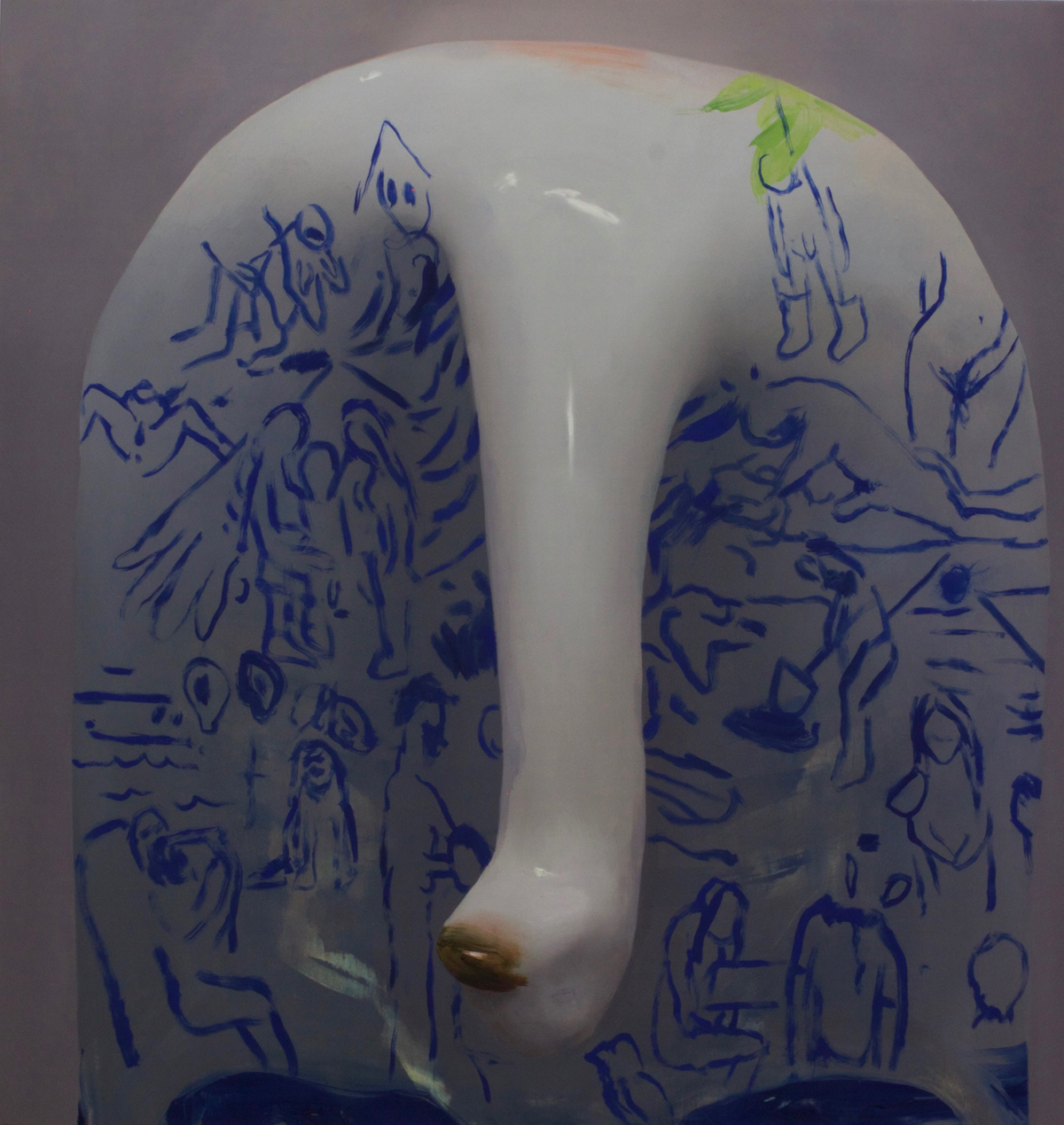 Ambera Wellmann, Temper Ripened, 2017. Oil on linen, 38 inches by 35 inches.
Ambera Wellmann, Temper Ripened, 2017. Oil on linen, 38 inches by 35 inches.
Ambera Wellmann
The translucent clay bodies that populate Ambera Wellmann’s dextrous paintings provide both a layered visual archaeology and a reflection around figuration’s role in the production of gendered subjects and viewers. The Lunenburg-born Wellmann—who was also on the 2016 RBC Canadian Painting Competition finalists’ list—graduated from the MFA program at the University of Guelph in 2016 and from the BFA program at NSCAD University in 2011. She is interested in artists who engaged forms of realism to drive self-understanding and renewal during periods of rapid social and technological transformation. Exploring this tradition from a feminist perspective, her work embodies the experience of violence and eroticism that underlies realism; it also critically reflects upon how those sensations are rationalized as representations of women. While seductive in source imagery and masterful in technique, Wellmann’s art also aspires to a sense of vulnerability over knowledge, and feeling over explanation.
With files from Vidal Wu.

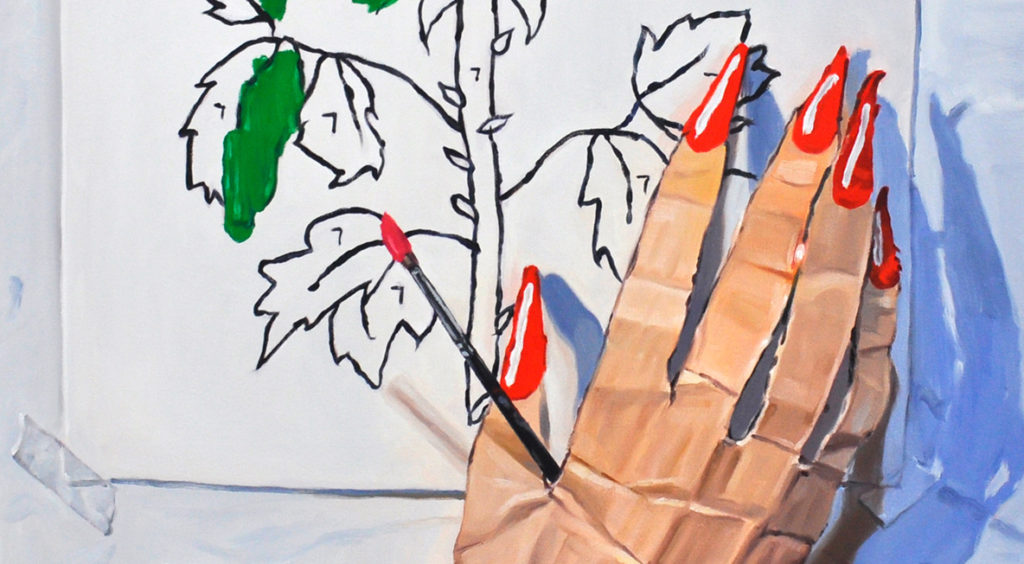 Laura Rokas-Bérubé, Paint by Number 7 (detail), 2016. Oil on canvas, 36 inches by 28 inches.
Laura Rokas-Bérubé, Paint by Number 7 (detail), 2016. Oil on canvas, 36 inches by 28 inches.
